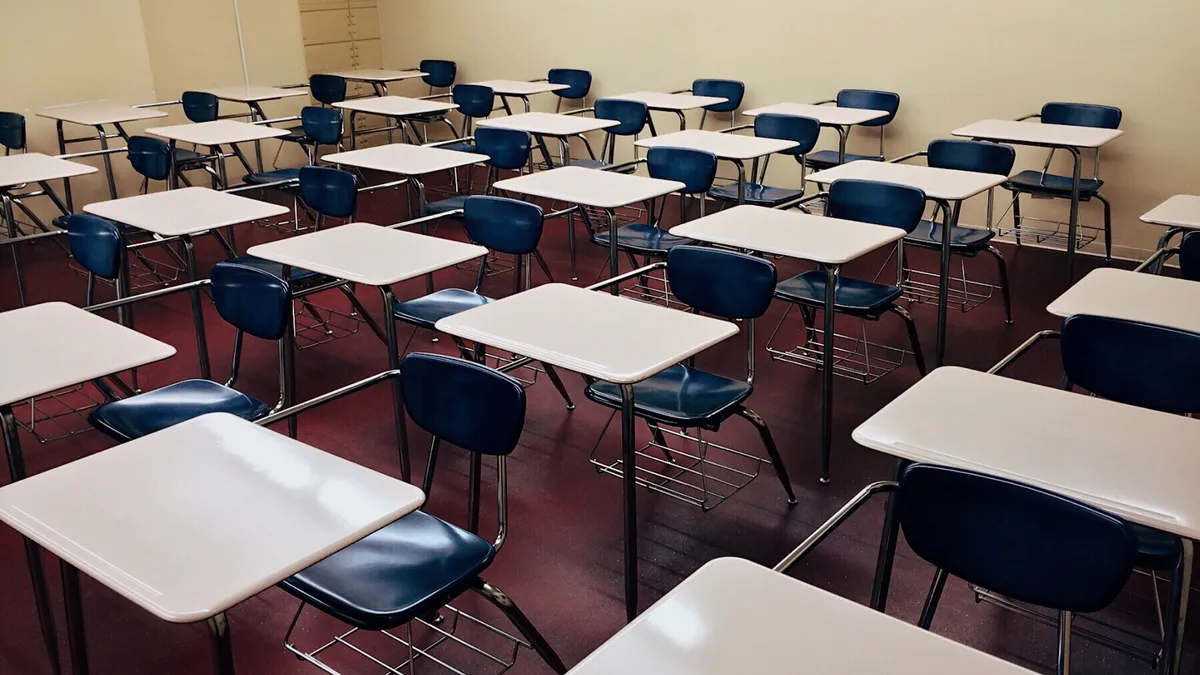Dive Brief:
- In a new policy update, the National Association of State Boards of Education (NASBE) examines trends in states' school reopening guidance based on public health guidelines and existing COVID-19 data.
- Among common trends: Many states engaged stakeholders when creating guidance, with 27 states and the District of Columbia collaborating with health and education stakeholders in the process, and 26 states including a tiered approach with various models to choose from based on local COVID-19 data.
- The update also notes that equity was a priority in plans from Connecticut, Maine and Oregon, based on the recognition of COVID-19's outsized impact on specific populations and the need for social-emotional supports for all students.
Dive Insight:
Perhaps most notably, the NASBE's analysis recognizes that many states' reopening plans will need to be fluid as research and on-the-ground conditions shift understanding of the novel coronavirus. As the update's author, NASBE Associate Editor Joseph Hedger, writes, the politicization of these efforts further necessitates clear communication of new decisions at the national, state and local levels by policymakers.
In recent weeks, the Trump administration has added to an already charged environment by stepping up pressure for schools to fully reopen. President Donald Trump has threatened to withhold funds from schools failing to do so.
Infectious disease experts, however, caution a rush back to the classroom. Dr. Wendy Armstrong of the Emory University School of Medicine has advised that locations where there is "explosive growth" in the spread of COVID-19 wouldn't be the place to start reopenings, and that states should ideally see "significant reductions, a downward trend for at least a few weeks" before students and educators return to an in-person model.
While data cited during a National PTA webinar highlights significantly lower rates of infection and transmission among children, which currently account for about 7% of all U.S. cases, school buildings have a significant percentage of adults in vulnerable age groups or who have pre-existing conditions putting them at higher risk. Some students may also have conditions that place them in that high-risk category, necessitating further planning for both groups.
As a result, school districts must consider their liability for these educators and students in any decision to return to school. Several districts recently faced backlash over COVID-19 language added to waivers for voluntary extracurricular activities.












